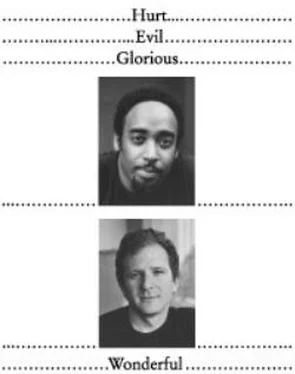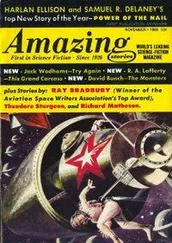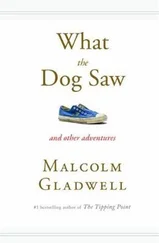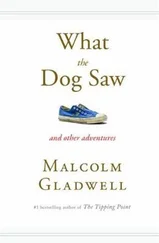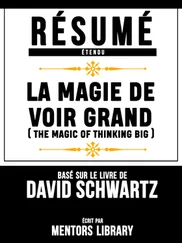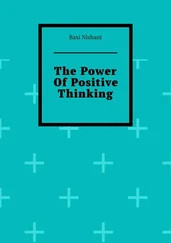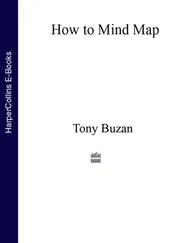Malcolm Gladwell - Blink - The Power of Thinking Without Thinking
Здесь есть возможность читать онлайн «Malcolm Gladwell - Blink - The Power of Thinking Without Thinking» весь текст электронной книги совершенно бесплатно (целиком полную версию без сокращений). В некоторых случаях можно слушать аудио, скачать через торрент в формате fb2 и присутствует краткое содержание. Жанр: Культурология, Психология, на английском языке. Описание произведения, (предисловие) а так же отзывы посетителей доступны на портале библиотеки ЛибКат.
- Название:Blink: The Power of Thinking Without Thinking
- Автор:
- Жанр:
- Год:неизвестен
- ISBN:нет данных
- Рейтинг книги:3 / 5. Голосов: 1
-
Избранное:Добавить в избранное
- Отзывы:
-
Ваша оценка:
- 60
- 1
- 2
- 3
- 4
- 5
Blink: The Power of Thinking Without Thinking: краткое содержание, описание и аннотация
Предлагаем к чтению аннотацию, описание, краткое содержание или предисловие (зависит от того, что написал сам автор книги «Blink: The Power of Thinking Without Thinking»). Если вы не нашли необходимую информацию о книге — напишите в комментариях, мы постараемся отыскать её.
Blink: The Power of Thinking Without Thinking — читать онлайн бесплатно полную книгу (весь текст) целиком
Ниже представлен текст книги, разбитый по страницам. Система сохранения места последней прочитанной страницы, позволяет с удобством читать онлайн бесплатно книгу «Blink: The Power of Thinking Without Thinking», без необходимости каждый раз заново искать на чём Вы остановились. Поставьте закладку, и сможете в любой момент перейти на страницу, на которой закончили чтение.
Интервал:
Закладка:
When Federico Zeri and Evelyn Harrison and Thomas Hoving and Georgios Dontas—and all the others—looked at the kouros and felt an “intuitive repulsion,” they were absolutely right. In the first two seconds of looking—in a single glance—they were able to understand more about the essence of the statue than the team at the Getty was able to understand after fourteen months.
Blink is a book about those first two seconds.
Imagine that I were to ask you to play a very simple gambling game. In front of you are four decks of cards—two of them red and the other two blue. Each card in those four decks either wins you a sum of money or costs you some money, and your job is to turn over cards from any of the decks, one at a time, in such a way that maximizes your winnings. What you don’t know at the beginning, however, is that the red decks are a minefield. The rewards are high, but when you lose on the red cards, you lose a lot. Actually, you can win only by taking cards from the blue decks, which offer a nice steady diet of $50 payouts and modest penalties. The question is how long will it take you to figure this out?
A group of scientists at the University of Iowa did this experiment a few years ago, and what they found is that after we’ve turned over about fifty cards, most of us start to develop a hunch about what’s going on. We don’t know why we prefer the blue decks, but we’re pretty sure at that point that they are a better bet. After turning over about eighty cards, most of us have figured out the game and can explain exactly why the first two decks are such a bad idea. That much is straightforward. We have some experiences. We think them through. We develop a theory. And then finally we put two and two together. That’s the way learning works.
But the Iowa scientists did something else, and this is where the strange part of the experiment begins. They hooked each gambler up to a machine that measured the activity of the sweat glands below the skin in the palms of their hands. Like most of our sweat glands, those in our palms respond to stress as well as temperature—which is why we get clammy hands when we are nervous. What the Iowa scientists found is that gamblers started generating stress responses to the red decks by the tenth card, forty cards before they were able to say that they had a hunch about what was wrong with those two decks. More important, right around the time their palms started sweating, their behavior began to change as well. They started favoring the blue cards and taking fewer and fewer cards from the red decks. In other words, the gamblers figured the game out before they realized they had figured the game out: they began making the necessary adjustments long before they were consciously aware of what adjustments they were supposed to be making.
The Iowa experiment is just that, of course, a simple card game involving a handful of subjects and a stress detector. But it’s a very powerful illustration of the way our minds work. Here is a situation where the stakes were high, where things were moving quickly, and where the participants had to make sense of a lot of new and confusing information in a very short time. What does the Iowa experiment tell us? That in those moments, our brain uses two very different strategies to make sense of the situation. The first is the one we’re most familiar with. It’s the conscious strategy. We think about what we’ve learned, and eventually we come up with an answer. This strategy is logical and definitive. But it takes us eighty cards to get there. It’s slow, and it needs a lot of information. There’s a second strategy, though. It operates a lot more quickly. It starts to kick in after ten cards, and it’s really smart, because it picks up the problem with the red decks almost immediately. It has the drawback, however, that it operates—at least at first—entirely below the surface of consciousness. It sends its messages through weirdly indirect channels, such as the sweat glands in the palms of our hands. It’s a system in which our brain reaches conclusions without immediately telling us that it’s reaching conclusions.
The second strategy was the path taken by Evelyn Harrison and Thomas Hoving and the Greek scholars. They didn’t weigh every conceivable strand of evidence. They considered only what could be gathered in a glance. Their thinking was what the cognitive psychologist Gerd Gigerenzer likes to call “fast and frugal.” They simply took a look at that statue and some part of their brain did a series of instant calculations, and before any kind of conscious thought took place, they felt something, just like the sudden prickling of sweat on the palms of the gamblers. For Thomas Hoving, it was the completely inappropriate word “fresh” that suddenly popped into his head. In the case of Angelos Delivorrias, it was a wave of “intuitive repulsion.” For Georgios Dontas, it was the feeling that there was a glass between him and the work. Did they know why they knew? Not at all. But they knew .
The part of our brain that leaps to conclusions like this is called the adaptive unconscious, and the study of this kind of decision making is one of the most important new fields in psychology. The adaptive unconscious is not to be confused with the unconscious described by Sigmund Freud, which was a dark and murky place filled with desires and memories and fantasies that were too disturbing for us to think about consciously. This new notion of the adaptive unconscious is thought of, instead, as a kind of giant computer that quickly and quietly processes a lot of the data we need in order to keep functioning as human beings. When you walk out into the street and suddenly realize that a truck is bearing down on you, do you have time to think through all your options? Of course not. The only way that human beings could ever have survived as a species for as long as we have is that we’ve developed another kind of decision-making apparatus that’s capable of making very quick judgments based on very little information. As the psychologist Timothy D. Wilson writes in his book Strangers to Ourselves: “The mind operates most efficiently by relegating a good deal of high-level, sophisticated thinking to the unconscious, just as a modern jetliner is able to fly on automatic pilot with little or no input from the human, ‘conscious’ pilot. The adaptive unconscious does an excellent job of sizing up the world, warning people of danger, setting goals, and initiating action in a sophisticated and efficient manner.”
Wilson says that we toggle back and forth between our conscious and unconscious modes of thinking, depending on the situation. A decision to invite a co-worker over for dinner is conscious. You think it over. You decide it will be fun. You ask him or her. The spontaneous decision to argue with that same co-worker is made unconsciously—by a different part of the brain and motivated by a different part of your personality.
Whenever we meet someone for the first time, whenever we interview someone for a job, whenever we react to a new idea, whenever we’re faced with making a decision quickly and under stress, we use that second part of our brain. How long, for example, did it take you, when you were in college, to decide how good a teacher your professor was? A class? Two classes? A semester? The psychologist Nalini Ambady once gave students three ten-second videotapes of a teacher—with the sound turned off—and found they had no difficulty at all coming up with a rating of the teacher’s effectiveness. Then Ambady cut the clips back to five seconds, and the ratings were the same. They were remarkably consistent even when she showed the students just two seconds of videotape. Then Ambady compared those snap judgments of teacher effectiveness with evaluations of those same professors made by their students after a full semester of classes, and she found that they were also essentially the same. A person watching a silent two-second video clip of a teacher he or she has never met will reach conclusions about how good that teacher is that are very similar to those of a student who has sat in the teacher’s class for an entire semester. That’s the power of our adaptive unconscious.
Читать дальшеИнтервал:
Закладка:
Похожие книги на «Blink: The Power of Thinking Without Thinking»
Представляем Вашему вниманию похожие книги на «Blink: The Power of Thinking Without Thinking» списком для выбора. Мы отобрали схожую по названию и смыслу литературу в надежде предоставить читателям больше вариантов отыскать новые, интересные, ещё непрочитанные произведения.
Обсуждение, отзывы о книге «Blink: The Power of Thinking Without Thinking» и просто собственные мнения читателей. Оставьте ваши комментарии, напишите, что Вы думаете о произведении, его смысле или главных героях. Укажите что конкретно понравилось, а что нет, и почему Вы так считаете.
